Description
The instruction for medical use of Grippostad medicine C Stik the Trade name of Grippostad® With Stik Mezhdunarodnoye the unlicensed name Is not present the Dosage form of the Granule for preparation of solution for intake Structure One stik-bag contains active agents: paracetamol of 400 mg ascorbic acid of 300 mg caffeine of 50 mg of chlorphenaminum a maleate of 5 mg, excipients – anhydrous citric acid, Natrii hydrocarbonas, sodium cyclomate, sodium saccharin, povidone, Riboflavinum sodium phosphate, talc, Evogran lemon fragrance. The description stik-bag Contents – loose granules of white or almost white color, without agglomerates or lumps. Drug solution muddy, from yellow till chartreuse color, with a lemon smell. Pharmacotherapeutic group Analgetics. Analgetics – antipyretics others. Anilides. Paracetamol in a combination from psikholeptika the ATX N02BE71 Code the Pharmacological Pharmacokinetics Paracetamol Later properties of intake paracetamol is quickly and completely soaked up from digestive tract. The peak of plasma concentration is reached in 30-60 minutes after reception. Paracetamol is quickly distributed in all body tissues. Indicators of concentration of paracetamol in blood, blood plasma and saliva are comparable among themselves. Linking with proteins of blood plasma low. Paracetamol metabolism, is generally carried out in a liver by conjugation with glucuronic and sulfuric acids. At reception of the doses exceeding therapeutic there is a fast saturation of conjugation test. Partially metabolism of paracetamol is carried out with the participation of the system of P450 cytochrome (mainly CYP2E1) that N-acetyl-r-quinone of an imine which detoxication is carried out by glutathione and also linking with cysteine and mercapturic acid leads to formation of a metabolite. In case of the profound intoxication the quantity of toxic metabolites increases. Removal of paracetamol happens, mainly, to urine. 90% of the soaked-up quantity are removed within 24 hours generally in the form of glucuronides (60-80%) and the connected sulfate (20-30%) through kidneys. Less than 5% are removed in not changed look. Elimination half-life makes about 2 hours. At patients with abnormal liver functions and kidneys and also at overdose and at newborns the elimination half-life is extended. The maximum effect and average duration of action (4-6 hours) approximately correlates with the level of plasma concentration. Removal of paracetamol and its metabolites slows down at patients with a heavy renal failure (clearance of creatinine ˂ 10 ml/min.). At patients of advanced age the ability to binding of paracetamol remains. Caffeine After intake caffeine quickly and almost is completely soaked up (t1/2 = 2-13 minutes) and its bioavailability is approximately equal to absolute. After reception of 5 mg/kg of Cmax it is reached within 30-40 minutes. Linking with proteins of blood plasma varies from 30 to 40%, and the volume of distribution is 0.52 – 1.06 l/kg. Caffeine is distributed in all bodies and fabrics, quickly gets through hematoencephalic and placentary barriers and also is removed with breast milk. Elimination half-life makes from 4.1 to 5.7 hours, however, depending on individual fluctuations, can raise till 9-10 o’clock. Caffeine and its metabolites are removed, mainly, through kidneys. In the urine collected within 48 hours about 86% of the accepted dose out of which no more than 1.8% are brought in the form of not changed caffeine are found. The main metabolites are 1-methyl-uric acid (12-38%), 1 methylxanthine (8-19%) and 5-acetylamino-6-amino-3-methyluracil (15%). 2-5% of the accepted dose are removed with a stake. 44% of total number of metabolites are made by 1.7-dimethyl uric acid. Ascorbic acid Ascorbic acid is absorbed from proximal departments of a small intestine, extent of absorption depends on concentration. At increase in a single dose the bioavailability decreases to 60-75% after reception of 1 g, approximately to 40% – after reception of 3 g and to 16% – after 12 g. Not absorbed quantity collapses flora of a large intestine to carbon dioxide and organic acids. At healthy adults the maximum speed of metabolism of 40-50 mg/days is reached at plasma concentration of 0.8-1.0 mg/dl. The general daily metabolism is about 1 mg/kg of body weight. After reception of extremely high doses 3 hours later the level of plasma concentration to 4.2 mg/dl can quickly be reached. 80% of ascorbic acid are removed in not changed look through kidneys. The average value of elimination half-life is 2.9 hours. Removal through kidneys is carried out by glomerular filtration and the subsequent return absorption in proximal tubules. The upper bound of concentration of ascorbic acid/dl in plasma of healthy adults makes 1.34±0.21 mg at men and women have 1.46±0.22 mg. After use of high doses about 180 mg/days the general content of ascorbic acid in an organism is not less than 1.5 g. Accumulates in a hypophysis, adrenal glands, a lens and leukocytes. Chlorphenaminum a maleate the Peak of plasma concentration of chlorphenaminum is reached in 1-2 hours after reception. Duration of action is 3-6 hours. Metabolism is carried out, mainly, in a liver by hydroxylation and conjugation and also demethylation and formation of N- and S-oxides. The bioavailability at intake is 25-50% owing to the significant effect of the first passing which decreases at patients with insufficiency of function of a liver. Linking with proteins of blood plasma – 69-72%. The volume of distribution is 3-7 l/kg of body weight. Elimination half-life at adults makes 15-36 hours, and children have 10-13 hours. At patients with a renal failure it is necessary to expect lengthening of elimination half-life of metabolites. Depending on the pH level (acidic or alkaline environment) of 0-34% of the accepted dose it is removed with urine in the form of not changed chlorphenaminum. At prolonged use the accumulation is possible. A pharmacodynamics the Combined drug for elimination of symptoms of catarrhal diseases. Renders analgetic, febrifugal and anti-inflammatory effects and also spasmolytic, broncholitic, antiallergic and all-tonic action. Paracetamol Paracetamol renders anesthetizing, febrifugal and weak anti-inflammatory effects. The mechanism of effect of paracetamol is up to the end not found out. It is proved that paracetamol has more expressed the inhibiting effect on the central synthesis of prostaglandins, than on peripheral. Also paracetamol suppresses effect of endogenous pyrogens in the center of thermal control of a hypothalamus. Ascorbic acid Ascorbic acid and its metabolite dehydroascorbic acid participate in regulation of oxidation-reduction processes. Ascorbic acid acts as a cofactor of many fermental systems (formation of collagen, synthesis of a catecholamine, hydroxylation of steroids, tyrosine and exogenous substances, biosynthesis of a carnitine, regeneration of tetrahydrofolic acid and also alpha amination of proteins, such as AKTG and gastrin). The deficiency of ascorbic acid reduces stability of an organism, especially a chemotaxis, activation of a system of a compliment and products of interferon. So far not all molecular and biological functions are established. Ascorbic acid strengthens absorption of salts of iron due to reduction of ions of iron and forming of chelates of iron. It blocks chain reactions with participation of free radicals in fluid mediums of an organism. The close biochemical interrelation between antioxidant functions of ascorbic acid and vitamin A, E, and carotinoids is noted. The fact that ascorbic acid promotes reduction of potential carcinogenic substances in digestive tract is not completely proved. Caffeine Kofein is to the ksantinovy derivatives strengthening analgetic effect of paracetamol. Chlorphenaminum Chlorfenamin’s maleate the maleate is a classical blocker of H1 receptors which suppresses the action of a histamine arising during an immune response. At grippopodobny states it is expressed in increase in permeability of capillaries and a phenomenon of reduction of smooth muscles, in particular muscles of bronchial tubes. Removal of a rhinedema and reduction of secretion promotes restoration of nasal breath. The indications symptomatic treatment of cold, SARS, flu which are followed by the increased body temperature, a headache, muscular pain, congestion of a nose and dry cough the Route of administration and doses Adults accept Grippostad® With Stik on one stik-bag 3 times a day. At patients with abnormal liver functions or kidneys and also with Gilbert’s syndrome it is necessary to lower a dose of drug or to increase an interval between receptions. Contents of one stik-bag are added to 150 ml of drinking water of room temperature, used in one step. Granules are dissolved within one minute even without hashing. Гриппостад® With Stik it should not be applied for a long time or in the doses exceeding recommended without consultation of the doctor. Side effects Often (≥1/100 – & lt, 1/10) dryness in a mouth Infrequently (≥1/1000 – & lt, 1/100) skin allergic reactions (erythematic or urtikarny rashes) fervescence (medicinal fever) of damage of mucous membranes Seldom (≥1/10000 – & lt, 1/1000) increase in level of hepatic transaminases is Very rare (& lt, 1/10000) changes of a picture of blood: the leukopenia, a neutropenia, an agranulocytosis, thrombocytopenia, a Werlhof’s disease, a pancytopenia, aplastic anemia, at administration of drug in high doses – an insignificant methemoglobinemia dyskinesia (motive disorders) development of glaucoma (closed-angle glaucoma), disorders of vision hypersensitivity of airways, a bronchospasm (analgetic asthma) at predisposed patients of reaction from digestive tract injury of a liver (after prolonged use in high doses or overdoses) urination disturbances, injury of kidneys (after prolonged use in high doses) increase in appetite heavy reactions of hypersensitivity to paracetamol, such as vascular hypostasis, asthma, the increased sweating, nausea, falling of arterial blood pressure up to disturbances of circulation and an acute anaphylaxis psychotic reactions heavy skin reactions Frequency is unknown intake of paracetamol can affect results of definition of uric acid in blood by means of phosphatotungstic acid and determination of level of glucose in blood by method glyukozo – oxidases-peroxidases after intake of ascorbic acid in a dose of 1 g concentration of ascorbic acid in urine can increase in such a way that assessment of various kliniko-chemical parameters will be complicated (glucose, uric acid, creatinine and inorganic phosphates) and also the doubtful negative take can be received in the analysis on the occult blood in Calais. In general, after intake of ascorbic acid, assessment of results of the chemical analyses based on staining reactions can be complicated, chlorphenaminum the maleate can affect results of skin tests for allergens of disturbance of a warm rhythm (tachycardia) concern, insomnia was in some cases observed temporary interrelation between administration of drug and development of bullous skin reactions, such as Stephens-Johnson’s syndrome and toxic epidermal necrolysis (Lyell’s disease) of the Contraindication hypersensitivity to drug components heavy renal failures children’s and teenage age up to 18 years pregnancy and the period of a lactation Medicinal interactions combined use with the medicines which are slowing down gastric emptying such as propantelin, can reduce absorption and, respectively, slow down effect of paracetamol simultaneous use with the drugs accelerating gastric emptying, for example with Metoclopramidum can accelerate absorption and approach of effect of drug combined use with a zidovudine increases risk of development of a neutropenia. Simultaneous use with a zidovudine perhaps only after consultation with the doctor probenetsid suppresses linking of paracetamol with glucuronic acid and by that leads to decrease in clearance of paracetamol. At simultaneous use with probenetsidy it is necessary to reduce a drug dose Salicylamidums can cause lengthening of elimination half-life of drug it is necessary to be careful at a concomitant use with the medicines leading to induction of enzymes of a liver and also with potentially hepatotoxic substances the long use of Grippostad® With Stik (within several weeks) strengthens effect of anticoagulants holestiramin simultaneous use with the drugs suppressing the central nervous system function or with alcohol reduces paracetamol absorption enhances sedation of last Grippostad® With Stik can reduce sedation of various substances, such as, barbiturates, antihistamines, etc. the concomitant use with sympathomimetics, thyroxine can lead to strengthening of takhikardialny effect of the last at simultaneous use with theophylline removal of the last caffeine can slow down increases the potential of dependence of substances of efedrinovy type a combination of caffeine and substances with a broad spectrum of activity (for example, with benzodiazepines) in some cases can cause various and unpredictable interactions oral contraceptives, Cimetidinum and Disulfiramum reduce, and barbiturates and nicotine – strengthen destruction of caffeine in a liver combined use with inhibitors of a giraza of quinolone-carboxylic type can slow down removal of caffeine and its metabolite of paraxanthine the Special instructions Grippostad® With Stik has to be applied only with extra care or after consultation with the doctor at the following states: renal failures of an abnormal liver function Gilbert’s syndrome (Meylengrakht’s disease) an oxalic urolithiasis of a disease of accumulation of iron (thalassemia, hemochromatosis, drepanocytic anemia) a chronic alcohol abuse piloroduodenalny obstruction and obstruction of a neck of a gall bladder closed-angle glaucoma a peptic ulcer of a stomach and a 12-perstny gut a hyper thyroidism of disturbance of a heart rhythm (risk of strengthening of tachycardia and extrasystoles) disturbing states (risk of strengthening of manifestations) At high temperature, deterioration in symptomatology, emergence of symptoms of consecutive infection or other complications it is necessary to consult with the doctor. Paratsetamolsoderzhashchy medicines have to be applied only within several days and not be applied in the doses exceeding recommended without consultation with the doctor. Prolonged use of high doses of sedatives and also disturbance of recommendations can lead to development of a headache which it is impossible to treat increase in a dose of drug. Also as well as all paratsetamolsoderzhashchy medicines, reception of Grippostad® With Stik in the doses exceeding recommended can lead to severe damage of a liver. In this case immediate treatment is necessary. For the purpose of prevention of overdose of drug it is necessary to remember that it is impossible to exceed the maximum daily dose of paracetamol (at body weight more than 43 kg – 4000 mg of paracetamol) including at use of other paratsetamolsoderzhashchy drugs. In some cases at patients with erythrocyte deficit dehydrogenase glyukozo-6-phosphate after reception of high doses of ascorbic acid (4 g a day) hemolysis development cases took place. In this regard it is impossible to exceed the recommended dose. At the patients predisposed to a lithogenesis at reception of high doses of ascorbic acid the risk of formation of kaltsiyoksalatny stones increases. Each stik-bag contains 5.6 mmol (128 mg) of sodium. It should be considered at treatment of the patients who are on a diet with the controlled content of sodium (giponatriyevoy / low-salt). Features of influence of medicine on ability to run the vehicle or potentially dangerous mechanisms Even at appropriate use of drug the speed of reactions can change to such an extent that the ability to run the vehicle or potentially dangerous mechanisms is broken. It is especially characteristic at use of drug in combination with alcohol. Overdose Symptoms: within 24 hours poyavlya
tsya the pallor of integuments, a loss of appetite, nausea, vomiting, an abdominal pain, with the subsequent subjective improvement of a state, despite preservation of a moderate abdominal pain as indicator of damage of a liver, increase in activity of “hepatic” transaminases, a lactate of dehydrogenase and bilirubin, in a combination with the increased tromboplastinovy time (in 12-48 hours after reception), the developed clinical picture of damage of a liver is shown in 2 days and reaches peak in 4-6 days. The overdose in a dose of 6 g of paracetamol and more at single dose at adults of the patient and 140 mg/kg of body weight at children leads to necrosis of cells of a liver which can lead to total irreversible necrosis and, later, to hepatocellular insufficiency, a metabolic acidosis and encephalopathy, with the subsequent coma and death. At overdose of paracetamol the acute renal failure with necrosis of renal tubules, even in the absence of serious injuries of a liver and also disturbance can develop from a myocardium and pancreatitis. The overdose of drug can lead to development of the anticholinergic syndrome which is shown face reddening, an ataxy, concern, hallucinations, a muscular tremor, spasms, expansion of pupils, dryness in a mouth, constipations and abnormally high temperature increase. Further symptoms from central nervous system can be observed (hallucinations, lacks of coordination and spasms). Final symptoms are the coma, an apnoea and cardiovascular collapse. At reception of 1 g of caffeine and more during the short span the tremor, reactions from central nervous system can develop, a cardiovascular system (tachycardia, damages of a myocardium). After reception of more than 3 g of ascorbic acid the tranzitorny osmotic diarrhea accompanied with gastrointestinal symptomatology which develops always at reception more than 10 g can develop. Treatment: symptomatic. The form of release and packing Drug place in stik-bags from a three-layer film polyester/aluminium/polyamide. On 12 stik-bags together with the instruction for medical use in the state and Russian languages put in a pack from cardboard. To Store storage conditions at a temperature not over 25 ºС. To store out of children’s reach! 3 years not to apply a period of storage after an expiration date. Prescription status Without prescription Losan Pharma GmbH Producer, Germany the Name and the country of the owner of the registration certificate of STADA Artsnaymittel AG Stadastrasse 2 – 18 of D-61118 Bud Vilbel, Germany
to Develop





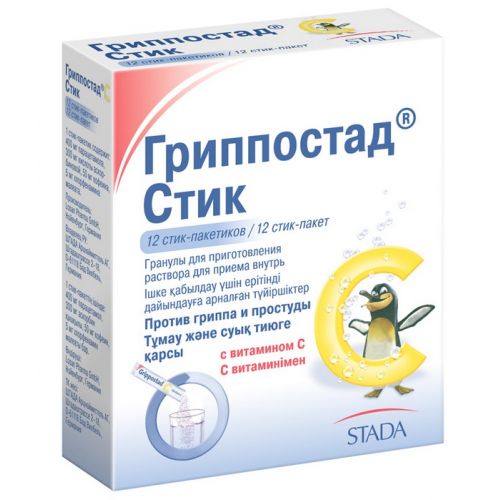

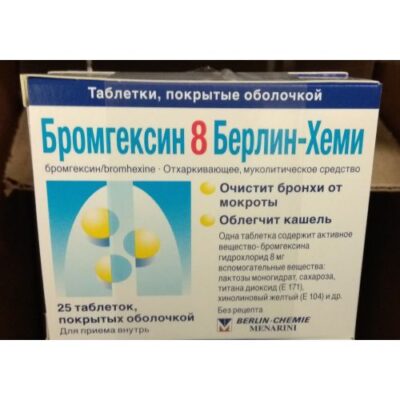
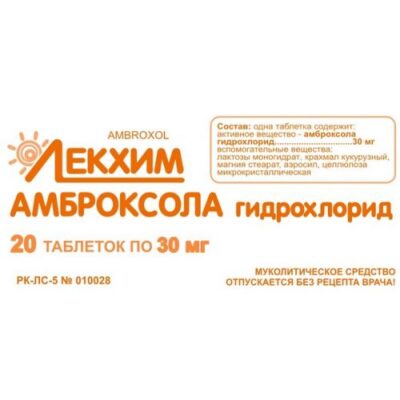
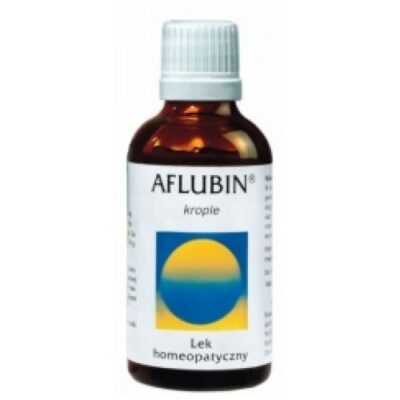
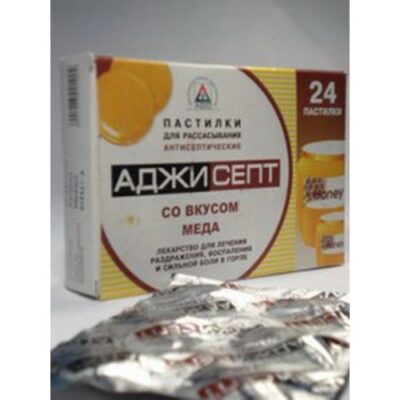
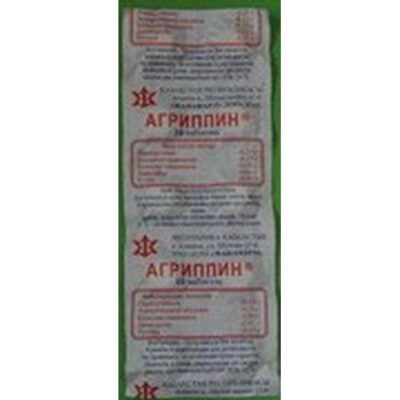
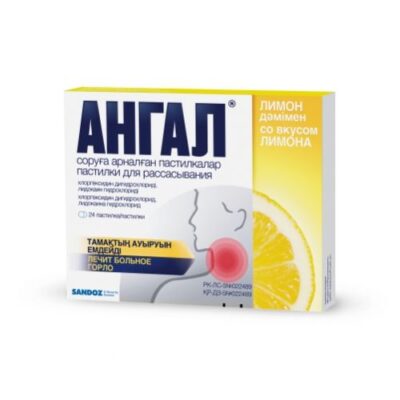
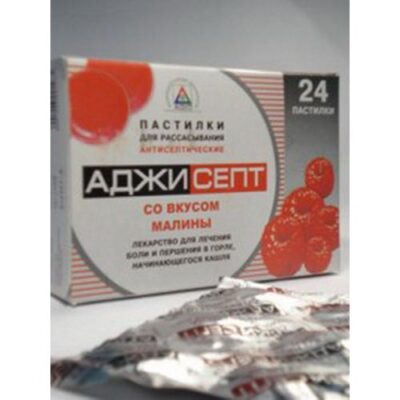
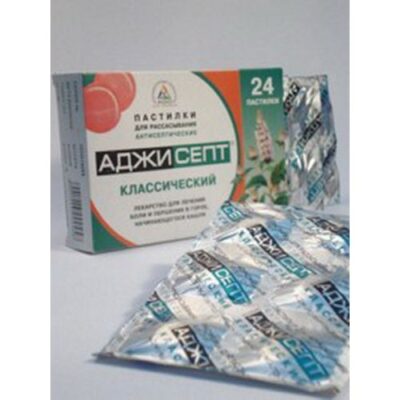
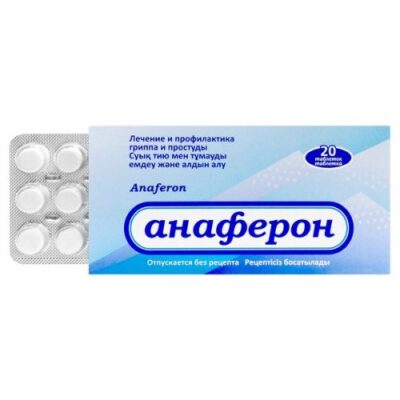






Reviews
There are no reviews yet.